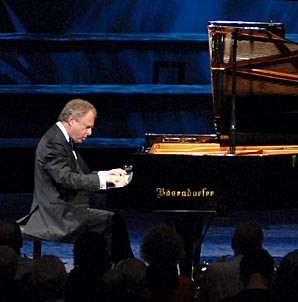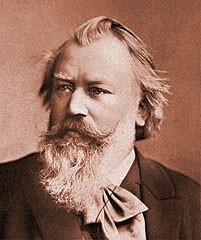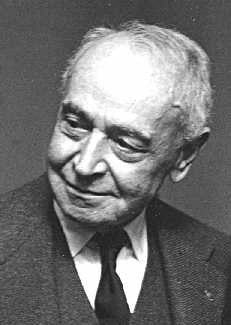Riccardo Muti: The New York Philharmonic
Andras Schiff Performs a Brilliant Brahms
By: Susan Hall - Mar 05, 2010
Ricarrdo Muti ConductorAndras Schiff, Piano
Brahms, Piano Concerto No. 1 in D minor, Op. 15
Hindemith, Symphony in E Flat for Large Orchestra
New York Philharmonic
Program repeated on March 5 at 8pm and March 8 at 7:30
The first Brahms Piano Concerto, performed brilliantly by Andras Schiff with the New York Philharmonic conducted by Riccardo Muti, is not your characteristic Brahms. It comes at you loud and shocking. Dynamics dominate the piece. Brahms was told early on that he was Beethoven's legitimate heir and this notion intimidated him. Brahms tried to distinguish his work, in this case by providing startling contrasts between barely whispered pianissimos and bold, searing fortes. Muti is more than up to the task of revealing the ebbing and swelling.
Andras Schiff gave a stunning interpretation on the piano. Brahms himself was a pianist and surely composed this piece to display his own talent. In the process, he provided fodder for future pianistic pyrotechnics. Schiff revealed all the dynamic possibilities in this performance.
Brahms had consulted with conductor and violinist Joseph Joachim and Clara Schumann among others. Thematic transformation, an idea advanced by both Wagner and Liszt, causes "heroic motives to become gentle and intimate and turning tender themes aggressive and dynamic" in this concerto. In both the orchestra and the piano, "bold use of the trill not as a cadences or an embellishment, but as a fist-shaking character," one of the most original touches in the concerto.
The Hindemith was a delightful surprise. As James M. Keller of the Philharmonic points out, when Muti undertakes a seldom-played composition, attention must be paid. Muti's taste is impeccable and his ability to mine the heart of music without peer. This evening's performance was no exception. Muti sets music in an incomparable silence, which makes the musical performance even more striking.
Hindemith is known for his capacity to shock and awe and the Symphony in E flat is no exception. After the oddly sparse harmonies of the Brahms, this rich orchestration was a pleasure.
Hindemith of course, produced remarkable pedagogic texts on harmony and counterpoint. Written by a man who could play every instrument of the orchestra and compose a wonderful work for any musical group, his pedagogic works even today are essential reading for students of music.
Hindemith loved the movies, and around the time he composed this piece, he had admired Disney's Snow White and then Pinocchio. The second movement octaves in this symphony feel a little like an animation score. Fun.
Hindemith composed the piece during Tanglewood's first season. He had arrived in America that year. The Nazis considered his work an apostasy and he was married to a Jew, so he had to relocate.
Meeting with the Tanglewood board on his arrival in New York, Hindemith reports to his wife: "Koussevitzky embraced me and then made a speechÂ…saying the piece his orchestra had the honor of playing yesterday was one of the best not only of our time but of all timeÂ…I had no idea he thought I was so important!...I told them I did not want to give any stupid old harmony and counterpoint courses in what they call 'Form.' I then demanded that my composition students should not be allowed to study instrumentation and orchestration with Copland. It was all grantedÂ…"
Spring is two weeks away. Here is Hindemith arriving at Tanglewood for the first time. "It is lovely here, the countryside gentle like northern Switzerland, there are dense woods everywhere, mountains trace a soft flowing line all along the horizon, and there is also a lake. The little town is named Lenox, the school and the music festival grounds are half-an-hours walk away in TanglewoodÂ…for the first time I felt something like love for this country."
This Symphony in E flat is inviting like his words. In the symphony the brass sections are on glorious display. Throughout the piece are exciting fanfares, and the last movement concludes with a brass celebration. Also reflected in the piece are Hindmith's gentle passion and his Disney-like sense of humor. Muti beckons.





